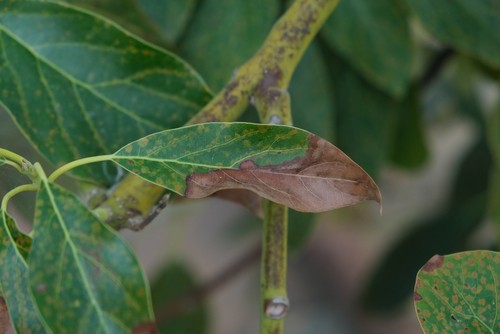Avocado plants are a popular choice among gardeners, as they produce delicious and healthy fruits. However, brown spots on avocado leaves can be a common problem that can affect the plant’s overall health and productivity. Avocado plant brown spots on leaves can be caused by a variety of factors, including pests, diseases, and nutrient deficiencies.
Identifying the cause of brown spots on avocado leaves is crucial in determining the appropriate treatment. In some cases, the spots may be caused by natural aging or sunburn, which may not require any intervention.
However, if the spots are caused by pests or diseases, prompt action is necessary to prevent further damage to the plant. Some of the common pests that can cause brown spots on avocado leaves include mites, thrips, and lace bugs, while fungal diseases like anthracnose and powdery mildew can also cause similar symptoms.
To prevent and treat brown spots on avocado leaves, it is important to maintain proper plant care and address any issues promptly. This includes ensuring proper watering, fertilization, and pest control, as well as regular inspection of the plant for signs of damage or disease.
With proper care, avocado plants can continue to produce healthy fruits and thrive in a garden or indoor setting.
Key Takeaways
- Brown spots on avocado leaves can be caused by a variety of factors, including pests, diseases, and nutrient deficiencies.
- Identifying the cause of brown spots is crucial in determining the appropriate treatment.
- Proper plant care, including watering, fertilization, and pest control, is important in preventing and treating brown spots on avocado leaves.
Also see:
- Blueberry Leaves Turning Yellow with Brown Spots
- Why Does My Pothos Have Brown Spots?
- Arrowhead Plant Brown Spots on Leaves
Identifying Avocado Plant Brown Spots on Leaves
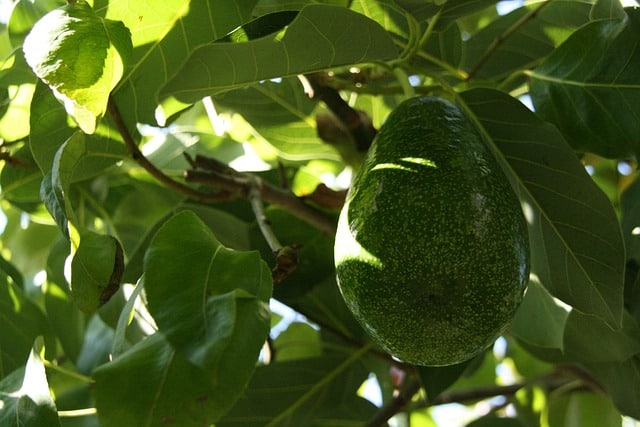
Brown spots on avocado leaves are a common symptom of various diseases and pests that can affect the plant. Identifying the cause of the brown spots is crucial to take the appropriate measures to prevent further damage to the plant. In this section, we will look at some of the common causes of brown spots on avocado leaves.
1. Anthracnose
Anthracnose is a fungal disease that causes brown spots on the leaves of the avocado plant. The spots are usually circular and have a dark brown color. The disease can also affect the fruit, causing it to rot. Anthracnose thrives in warm and humid conditions, and it spreads through water droplets.
To prevent anthracnose, avoid overwatering the plant and ensure good air circulation. Fungicides can also be used to control the disease.
2. Algal Leaf Spot
Algal leaf spot is a common disease that affects avocado plants. It is caused by a parasitic alga that forms yellowish-brown spots on the leaves. The spots can vary in size and shape and can merge to form larger patches.
The disease does not usually cause significant damage to the plant, but it can weaken it and make it more susceptible to other diseases. To prevent algal leaf spot, avoid overwatering and ensure good air circulation.
3. Septoria Leaf Spot
Septoria leaf spot is a fungal disease that causes brown spots with yellow halos on the leaves of the avocado plant. The spots are usually small and irregularly shaped. The disease can also affect the fruit, causing it to rot.
Septoria leaf spot thrives in warm and humid conditions, and it spreads through water droplets. To prevent septoria leaf spot, avoid overwatering and ensure good air circulation. Fungicides can also be used to control the disease.
4. Alternaria Leaf Blight
Alternaria leaf blight is a fungal disease that causes brown spots on the leaves of the avocado plant. The spots are usually circular and have a dark brown color. The disease can also affect the fruit, causing it to rot.
Alternaria leaf blight thrives in warm and humid conditions, and it spreads through water droplets. To prevent alternaria leaf blight, avoid overwatering and ensure good air circulation. Fungicides can also be used to control the disease.
Avocado Plant Brown Spots – 4 Common Problems
Avocado plants are susceptible to various factors that can cause brown spots on their leaves. Understanding the causes of these spots can help you take the necessary measures to prevent them from occurring. Here are some of the most common causes of brown spots on avocado leaves:

1. Watering and Drainage Issues
Overwatering or poor drainage can lead to brown spots on avocado leaves. When the soil is too wet, it can cause the roots to rot, which can affect the plant’s ability to absorb nutrients. This can result in brown spots on the leaves. On the other hand, if the soil is too dry, the plant can become stressed, which can also cause brown spots on the leaves.
2. Sun Exposure and Scorching
Avocado plants require a moderate amount of sunlight to grow properly. However, too much direct sunlight can cause the leaves to become scorched and turn brown. This can happen when the plant is exposed to direct sunlight for an extended period, especially during the hottest part of the day.
3. Frost Damage
Avocado plants are sensitive to frost and can suffer damage when exposed to freezing temperatures. Frost can cause the leaves to turn brown and wilt, and in severe cases, it can even kill the plant. It’s essential to protect your avocado plant from frost by covering it with a blanket or moving it to a warmer location.
4. Humidity Levels
Avocado plants prefer a moderate to high level of humidity. When the air is too dry, it can cause the leaves to turn brown and brittle. On the other hand, when the air is too humid, it can lead to fungal growth, which can also cause brown spots on the leaves.
Nutrient Deficiencies
Avocado plants require a balanced supply of nutrients to grow properly. Nutrient deficiencies can cause brown spots on the leaves, and if left untreated, can lead to the death of the plant. In this section, we will discuss the most common nutrient deficiencies that cause brown spots on avocado leaves.
1. Iron Deficiency
Iron is an essential nutrient for avocado plants, and a deficiency can cause brown spots on the leaves. Iron deficiency is more common in alkaline soils, where iron becomes less available to the plant. Symptoms of iron deficiency include yellowing of the leaves with brown spots between the veins.
To treat iron deficiency, apply chelated iron to the soil or spray the leaves with iron sulfate. Iron sulfate can be toxic to the plant if applied in excess, so follow the instructions carefully.
2. Nitrogen Deficiency
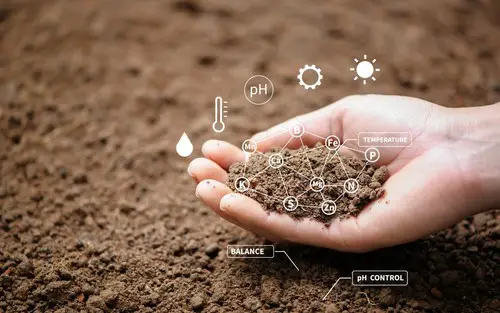
Nitrogen is another essential nutrient for avocado plants, and a deficiency can cause brown spots on the leaves. Nitrogen deficiency is more common in sandy soils, where nitrogen leaches out quickly. Symptoms of nitrogen deficiency include yellowing of the leaves and stunted growth.
To treat nitrogen deficiency, apply nitrogen-rich fertilizer to the soil. Organic fertilizers such as manure and compost are also good sources of nitrogen.
3. Zinc Deficiency
Zinc is a micronutrient that is essential for the growth and development of avocado plants. A deficiency can cause brown spots on the leaves, and the leaves may also become smaller and distorted. Zinc deficiency is more common in alkaline soils.
To treat zinc deficiency, apply zinc sulfate to the soil or spray the leaves with a solution of zinc sulfate. Zinc sulfate can be toxic to the plant if applied in excess, so follow the instructions carefully.
4. Excess Chloride
Avocado trees are sensitive to chloride and sodium chloride, and an excess of these minerals can cause brown spots on the leaves. Chloride and sodium chloride can accumulate in the soil over time, especially in areas with high salinity.
To treat excess chloride, flush the soil with water to leach out the excess minerals. Avoid using irrigation water with high chloride and sodium chloride content.
Pests and Diseases
Avocado plants are susceptible to various pests and diseases that can cause brown spots on their leaves. Understanding the causes of these spots is essential to keep the plant healthy and productive.
Ants and Mites
Ants and mites are common pests that can infest avocado plants. Ants are not harmful to the plant, but they can attract other pests like mealybugs and avocado thrips. These pests can cause brown spots on the leaves and damage the plant.
Mites, on the other hand, can cause severe damage to the plant by feeding on the leaves. The six-spotted mite is a common pest that can cause brown spots on avocado leaves.
Fungal and Bacterial Diseases
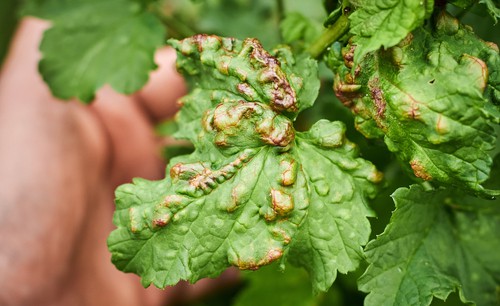
Fungal and bacterial diseases can also cause brown spots on avocado leaves. Fungal diseases like fungus infection can cause brown spots on the leaves, and if left untreated, can spread to other parts of the plant. Bacterial diseases like bacterial spot can also cause brown spots on the leaves and can lead to defoliation and reduced fruit yield.
Pest Infestation
Insect infestation can cause brown spots on avocado leaves. Pests like avocado lace bug can cause brown spots on the leaves by feeding on the sap. Mealybugs and avocado thrips can also cause brown spots on the leaves by sucking the sap and damaging the plant.
To prevent brown spots on avocado leaves, it is essential to control pest infestation. Natural predators like ladybugs and lacewings can help control pest populations. Regularly inspecting the plant for signs of pests and diseases and promptly treating them can also help prevent brown spots on the leaves.
Treatment and Prevention
Avocado plants are susceptible to brown spots on their leaves due to a variety of reasons. However, there are several treatment and prevention methods that can help keep your avocado tree healthy and free of brown spots.
Pruning and Care
Pruning can help prevent brown spots on avocado leaves by removing any diseased or damaged branches. This can improve air circulation and sunlight exposure, which can help prevent fungal growth. In addition, regular care such as watering and fertilizing can help keep avocado trees healthy and less prone to disease.
Fungicides and Sprays
Copper fungicide and other foliar sprays can be effective in treating brown spots caused by fungal diseases. These solutions can be applied directly to the leaves to prevent and treat the spread of disease. However, it is important to follow the manufacturer’s instructions carefully when applying these solutions to avoid damaging the tree.
Soil and Leaching
Leaching excess salts from the soil can help prevent brown spots caused by salt buildup. This can be achieved by watering the tree deeply and allowing the water to drain out of the bottom of the pot or soil. In addition, maintaining healthy soil with proper drainage and nutrient balance can help prevent brown spots caused by nutrient deficiencies.
Impact on Avocado Growth and Fruiting
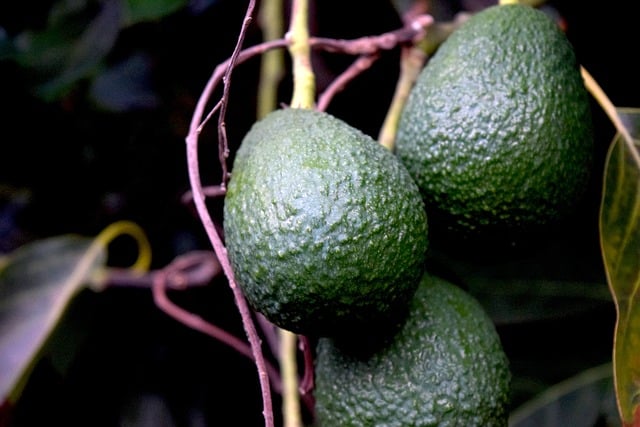
Brown spots on avocado leaves can have a significant impact on the growth and fruiting of the avocado plant. The leaves are responsible for photosynthesis, which is the process of converting sunlight into energy that the plant uses to grow and produce fruit.
When brown spots appear on the leaves, it can disrupt the photosynthesis process, leading to reduced growth and fruiting.
Avocado plants with brown spots on their leaves may also shed their foliage prematurely. This can have a negative impact on the plant’s ability to absorb nutrients from the earth and propagate, which can further hinder growth and fruiting.
One common cause of brown spots on avocado leaves is avocado scabbing, which is a fungal disease that affects the leaves and fruit of the plant. Avocado scabbing can cause the leaves to become discolored and develop dark spots, which can eventually lead to defoliation and reduced fruit production.
To prevent brown spots on avocado leaves, it is important to maintain proper watering and humidity levels, avoid overexposure to direct sunlight, and ensure that the plant is receiving adequate nutrients from the soil. Additionally, regular pruning of the avocado tree can help to improve air circulation and prevent the spread of fungal diseases.
Avocado Care in Specific Conditions
Avocado plants are sensitive and require specific care to thrive. Different conditions can affect the health of the plant, including weather, water, and soil quality. Here are some tips for caring for avocado plants in specific conditions.
1. Hot Weather
Avocado plants thrive in warm temperatures, but extreme heat can cause damage to the leaves and fruit. In hot weather, it’s important to provide shade for the plant. This can be done by placing a shade cloth over the plant or planting it near a tree that provides shade. Additionally, it’s important to water the plant regularly to prevent it from drying out.
2. Window Placement
When growing avocado plants indoors, it’s important to place them near a window that receives plenty of sunlight. However, direct sunlight can cause damage to the leaves. To prevent this, it’s recommended to use a sheer curtain or blinds to filter the sunlight.
3. Irrigation
Avocado plants require regular watering to thrive, but overwatering can cause damage to the roots. It’s important to water the plant deeply but infrequently. The frequency of watering will depend on the soil type and weather conditions. To determine when to water the plant, perform a soil test to check the moisture level.
4. Soil Quality

The quality of the soil can affect the growth and health of the avocado plant. It’s important to use well-draining soil that is rich in nutrients. Additionally, it’s recommended to fertilize the plant regularly to provide it with the necessary nutrients.
5. White Powdery Coating
A white powdery coating on the leaves can be a sign of avocado scab. This fungal disease can be treated with fungicides. It’s important to remove any infected leaves to prevent the disease from spreading.
6. Edema
Edema is a condition that causes blisters or bumps on the leaves of the avocado plant. This can be caused by overwatering or high humidity. To prevent edema, it’s important to water the plant deeply but infrequently and provide adequate ventilation.
7. Avocado Algal Leaf Spot
Avocado algal leaf spot is a parasitic algae that can cause damage to the leaves of the plant. It’s important to remove any infected leaves and treat the plant with fungicides.
8. Silvery Webbing
Silvery webbing on the leaves can be a sign of spider mites. These pests can be treated with insecticides. It’s important to remove any infected leaves to prevent the pests from spreading.
In conclusion, caring for avocado plants requires specific attention to detail, including weather, water, and soil quality. By following these tips, avocado plants can thrive and produce healthy fruit.
Frequently Asked Questions
How do I identify rust spots on avocado leaves?
Rust spots on avocado leaves are typically identified by small, circular, reddish-brown spots that appear on the leaves. These spots may have a yellow halo around them, and they can eventually lead to the death of the leaf. Rust is caused by a fungus that thrives in wet and humid conditions.
What causes avocado tree leaves to turn brown and fall off?
There are several reasons why avocado tree leaves may turn brown and fall off. One common cause is overwatering, which can lead to root rot and cause the leaves to wilt and die. Another cause is nutrient deficiencies, which can cause the leaves to yellow and eventually fall off. Pests and diseases can also cause the leaves to turn brown and fall off.
What are the symptoms of an avocado tree dying from top down?
When an avocado tree is dying from the top down, the leaves at the top of the tree will begin to wilt and turn brown. As the disease progresses, the brown leaves will spread downward, eventually killing the entire tree. Other symptoms may include a yellowing of the leaves, stunted growth, and a general decline in the health of the tree.
What are common diseases that affect avocado trees in Florida?
Avocado trees in Florida are susceptible to a number of diseases, including anthracnose, root rot, and scab. Anthracnose is a fungal disease that causes brown spots on the leaves and can eventually kill the tree. Root rot is caused by overwatering and can cause the roots to rot, leading to the death of the tree. Scab is a fungal disease that causes raised, scabby lesions on the fruit and leaves.
What are some common problems with avocado leaves?
Common problems with avocado leaves include brown spots, yellowing, and curling. Brown spots can be caused by a number of factors, including pests, diseases, and nutrient deficiencies. Yellowing can be caused by nutrient deficiencies, overwatering, or pests. Curling can be caused by pests or environmental factors such as wind or heat.
What should I do if my avocado tree’s leaves are turning brown and curling?
If your avocado tree’s leaves are turning brown and curling, the first step is to identify the cause. This may involve inspecting the tree for pests or signs of disease, testing the soil for nutrient deficiencies, or adjusting the watering schedule. Once the cause has been identified, appropriate measures can be taken to correct the problem. This may include applying fungicides or insecticides, adjusting the pH of the soil, or adjusting the watering schedule.

Hey, I’m Lisa and I’ve been an avid gardener for over 30 years. I love writing, talking and living in the garden! Feel free to connect with me on my socials below

